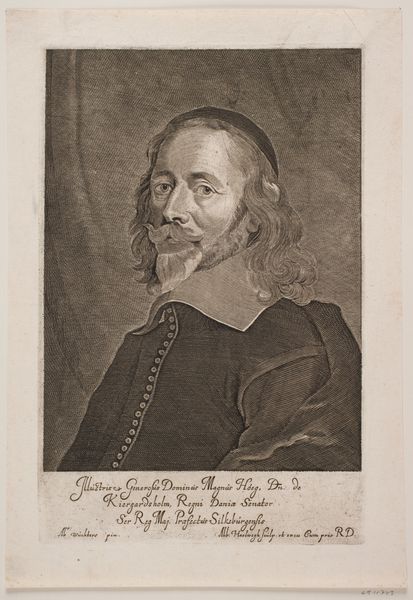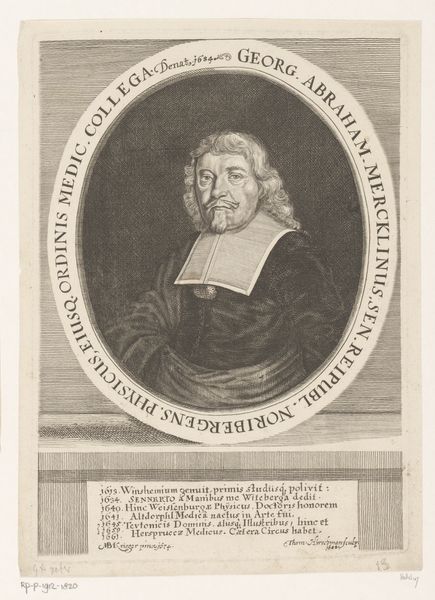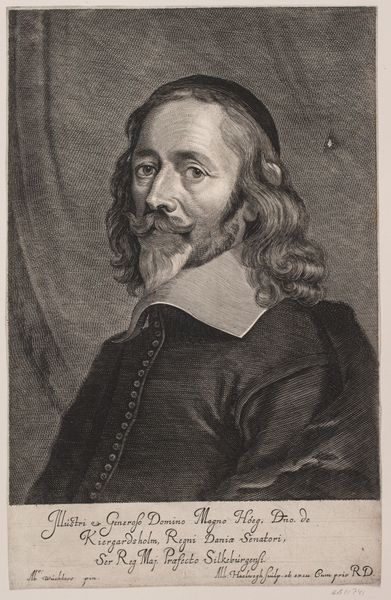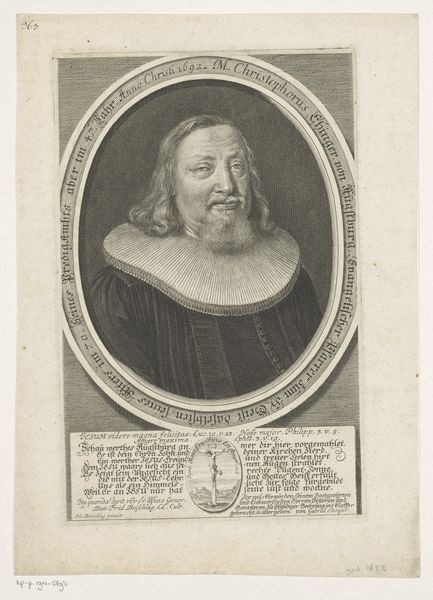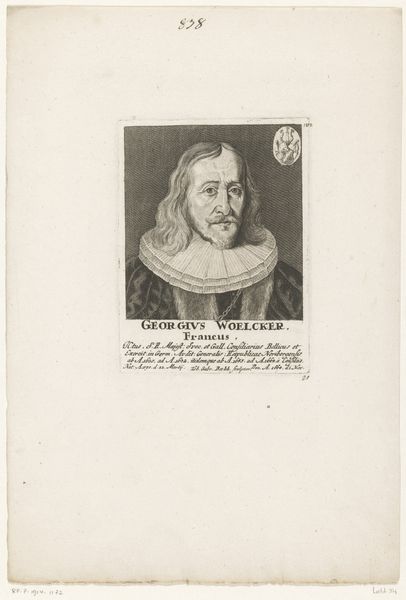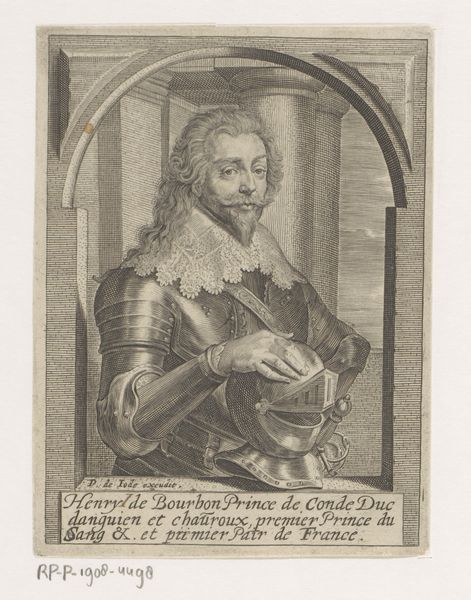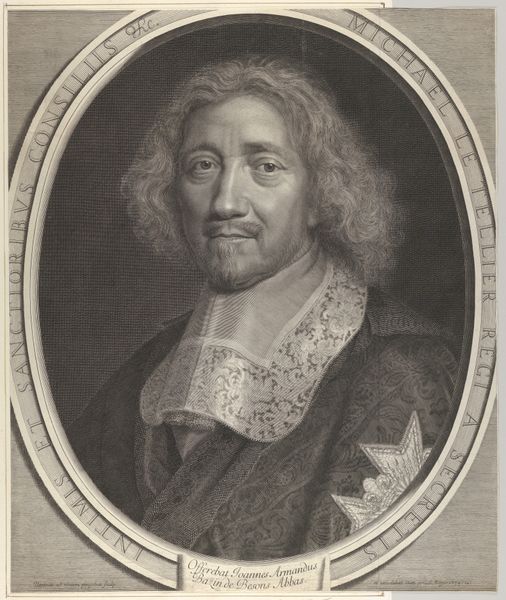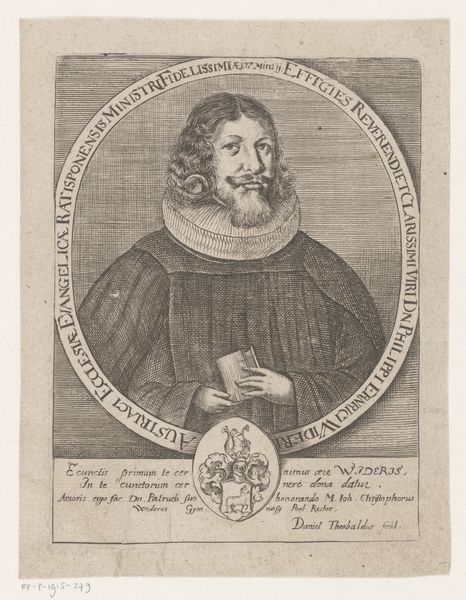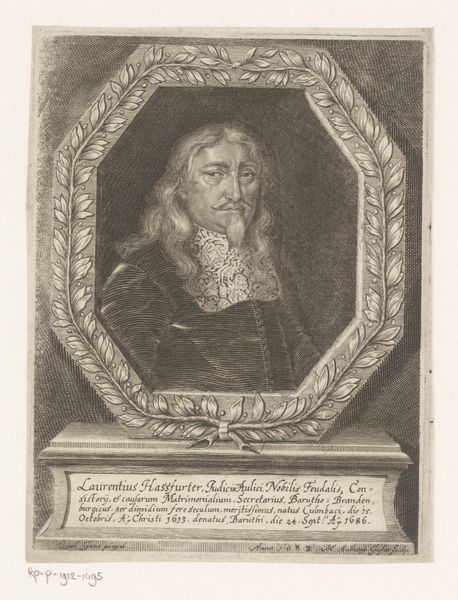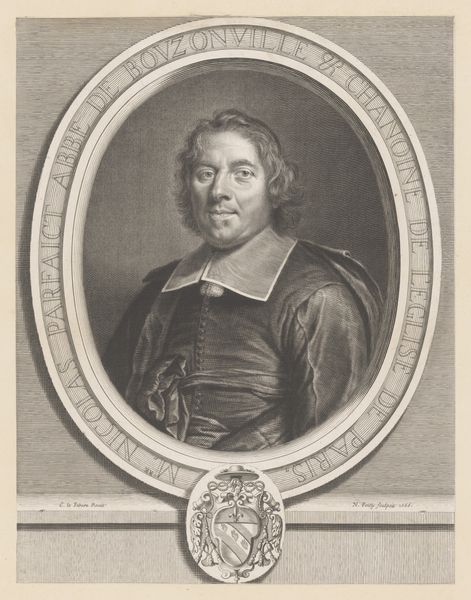
print, engraving
#
portrait
#
baroque
# print
#
engraving
Dimensions: 232 mm (height) x 159 mm (width) (bladmaal)
Curator: Sober and a bit austere, don’t you think? But look at the confidence in those eyes. Editor: Indeed. We're standing before a portrait titled "Eggert Elers. Til ligprædiken," created in 1667 by Albert Haelwegh. It’s an engraving, meant for print. Curator: A print, eh? Somehow makes him even more formidable, knowing it was made to circulate, to be multiplied and shared. Like a meme, Baroque style! All those carefully etched lines… Editor: The precision is definitely part of the intent. Portraiture at this time served very specific social functions. Think about legacy building, and cementing status in a pretty volatile world. Notice the book with an inscription on the right? A reminder to 'fear no one while doing right'. This, I believe, isn't just a face, it's a statement. Curator: You’re right, a statement! And look at how that statement is framed. The drape, the tiny coat-of-arms. But my eye keeps going back to his face. Is he kind? Stern? Or just…tired? The weight of all that expectation seems heavy on his shoulders. I mean he’s really rocking that wide, white collar though, don’t you think? So starched! So very, very…crisp! Editor: The detail certainly emphasizes his position. While, on the subject of legacy, one must also think about this work’s posthumous function. Given the subtitle, 'Til ligprædiken', meaning 'funeral sermon'… It shifts into something of a memorial piece. It probably accompanied printed orations given in his honor. The purpose then becomes something almost totemic: to sustain the subject’s memory within specific communities and political bodies. Curator: So this somber man becomes… immortalized through ink? In a way it makes the question of his expression, even more, poignant doesn’t it? If this engraving really did attempt to capture all of Eggert's character… Editor: Precisely. So it is a fascinating glimpse into how identity, authority, and grief mingled in the visual cultures of 17th-century Europe. Curator: It definitely sparks more than a few questions for me!
Comments
No comments
Be the first to comment and join the conversation on the ultimate creative platform.


